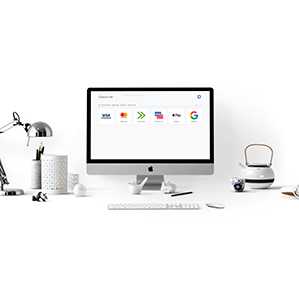10 checkout issues to avoid for higher conversion

- Denys Kyrychenko, CEO & Co-founder at Corefy
- 25.06.2021 10:00 am #conversion # recommendation
The first advice an online business gets as they start looking for ways to increase conversion is removing unnecessary friction. Indeed, that's an excellent recommendation. But when it comes to practice, what does this friction removal implies? Which steps exactly should be considered? And how to differentiate the unnecessary friction from the inevitable one? Luckily, the world's renowned payment companies and honoured research institutions have conducted numerous studies and customer surveys to find all the answers.
Relying on years of experience in payments, and the latest and most relevant research papers, I suggest converting those insights into a digestible example of unnecessary friction.
Common mistakes that ruin the checkout experience
According to Baymard Institute estimations based on dozens of sources, the average documented online shopping cart abandonment rate equals 69.80%. Disturbingly, it means that only 3 out of 10 shoppers finalise the purchase. Of course, window-shoppers who surf e-commerce websites without the intention to buy anything in the first place account for a decent share of that figure. Some prefer adding items to the cart to see how much money they need, some take a final prudent look at their cart and decide to cancel or postpone a purchase, some can just add an item to the cart by accident, and so on. And there's nothing a business can do about it. Let's call it a human factor.
Yet, customer experience studies prove that there are many factors that prevent a genuinely interested shopper from making a purchase. Those issues are on the businesses' side. But the upside is, all of them can be fixed. Actually, it's projected that an average merchant can increase their conversion rate by a staggering 35%+ solely through improving the checkout experience.
Let's segue to what makes a potential buyer drop out of the shopping journey and what business can do to solve it.
№1. Slow checkout process
Today, consumers choose online shopping for speed and convenience. They expect to pay in one click and feel frustrated when businesses fail to enable it.
According to Klarna's survey of 2,000 UK shoppers, 50% (a half!) say a slow checkout process would make them bail.
We suggest considering an overall website optimisation for it to load faster. As for the payment page itself, the company should make sure the payment service provider doesn't gear down the process. Some of the recommendations that will be mentioned below, as one-click purchases and pre-filled payment details, would also help to accelerate the checkout process significantly.
№2. No alternative payment methods
The payment market is thriving, customers preferences vary, and credit cards are not anymore the single way they may want to pay. It seems like it's no surprise, but 88% of checkouts in Europe fail to support Apple Pay or Google Pay, the world's leading alternative payment methods. By doing so, they lose customers, as 29% of online shoppers say the absence of alternative payment options at checkout would make them abandon shopping carts.
These are the most used payment methods in global e-commerce per transaction volume according to FIS Global Payments Report 2021.
Method | 2020 | 2024 forecast |
Digital & Mobile wallet | 44.5% | 51.7% |
Credit card | 22.8% | 20.8% |
Debit card | 12.3% | 12% |
Bank transfer | 7.7% | 5.3% |
Cash on delivery | 3.3% | 1.7% |
If by now, the businesses' checkout doesn't support any alternative payment methods, it is necessary to change it as soon as possible. Target audience analysis is an indispensable tool to help to determine the required methods.
№3. Unexpected fees
It would be best if the company took care of fees for your customer. It's reasonable to include all the payment method charges into an item price, making it seamless for the customer. If that's something that can't be done, it's important to make those fees clear and visible in advance before the customer enters their payment details.
69% of customers say they won't continue the purchase if they have to pay a fee for using an alternative payment method. By clearly stating if there would occur any fees before the actual payment data input, the business enhances customer experience and strengthens loyalty.
№4. The need to create an account
If the payment process on the website or app is tied in with an account creation process, the management should consider separating them. Customers need to have an option to pay as a guest without necessarily registration.
This way will speed up the checkout process and decrease the shopping cart abandonment rate. Moreover, the more satisfied a shopper is with their first purchase, the larger is the chance they'll return, register, and become a regular client.
№5. No autofill or ‘Remember me’ option
On the contrary, many online shoppers think it is annoying when a website they've used before doesn't remember them. This fact would make 24% of consumers abandon a purchase. By adding a little, neat ‘Remember me’ checkbox to the payment page, the company deals with this issue.
Another striking example of unnecessary friction is when a payment page can't autofill details saved in a customer's browser. Why ask them to re-enter data they've already entered elsewhere? Allowing the customers to autofill card information they've stored in their browser is the ultimate conversion booster.
№6. No chance to fix basic errors before submitting payment details
Payment technologies are advanced enough to enable highlighting payment information errors in real-time mode. Drawing the user's attention to an error as it occurs, will increase its chances of being fixed and make it unnecessary for the customer to fill in a payment form twice. Clicking the ‘Pay’ button must be the last step of the purchasing process.
№7. Undescriptive error messages
An analysis of 450 European e-commerce websites conducted by Stripe shows that another grave mistake many checkouts suffer from lies in undescriptive error messages.
It's not enough to emphasise those fields where there's a mistake with a red border or just display ‘Error!’. Error messages should clearly demonstrate what has to be fixed.
For instance, when a customer entered a card expiry date in the past, that's exactly what an error message should say. It helps the customer to fix the issue and successfully finalise their purchase.
№8. No translation and local options
It seems evident that by failing to translate checkout to local languages and provide support for local payment options, you're cutting entire countries off your potential audience. Still, in Europe, 74% of checkouts do not provide language options, and 81% fail to support local payment methods.
Running an international online business, the management should conduct target regions analysis and fulfil the payment needs of shoppers from these regions. Learning which local payment methods are popular in the countries of interest, what data fields they require, and which languages people speak there will inevitably result in more sales and higher conversion.
№9. Weak screen or device adaptivity
Today, almost $3 out of every $4 spent on online purchases is done so through a mobile device. No online business would want to miss out on such a significant market share. In fact, the vast majority of e-commerce websites do adapt to various screen sizes and devices. However, visual adaptivity is not enough.
As Stripe's findings revealed, 29% of checkouts fail to surface a numeric keypad to enter the card information on mobile. It makes payment data input aggravating and messes up the checkout experience.
№10. Biometrics not supported
Despite becoming widespread not so long ago, biometrics is already used and loved by consumers globally. They got used to facial recognition or fingerprints as a way to confirm their identity or auto-fill their details.
Klarna has found that 16% of customers would abandon their shopping cart if there's a lack of biometrics at the checkout. Interestingly, the figure is higher for Gen Z (20%). This should be taken into account if the business focuses on a young audience.
Having more than ten years of experience developing and promoting payment products, we at Corefy have tested and learned what works best in terms of payments. These insights and months of purposeful research helped us to find the optimal balance and bring our advanced сheckout solution to the market. Our clients have already reaped the benefits of having it on board, witnessing an average of 10-25% conversion increase.




















